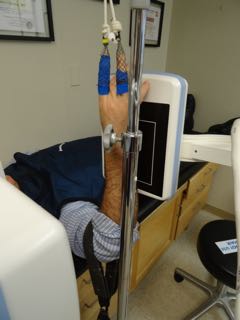Fracture or dislocation reduction

“Reduction” of a broken bone or a dislocated joint refers to “reducing” the gap between the fracture fragments or the gap between the two bones of a joint. If a fracture requires reduction, it is commonly performed in the Emergency Department. All dislocations require reduction, unless it spontaneously reduces (confirmed by an xray). If the fracture is not adequately reduced, or if a joint comes out of place again after it is initially reduced, re-reduction can sometimes be performed in the office. This is done after instillation of a local anesthetic agent into or around the injured bone/joint. We use fluoroscopic guidance to assure improved alignment of the bone, and congruent reduction of the joint. A splint is applied to hold the reduction, and usually a follow-up appointment within a week is made, when a new xray is taken to assess the stability of the bone/joint.
If the fractured bone remains stable, the splint is left in place and new appointments are made and new xrays may be taken to make sure the fragments do not shift as they heal. At some point, the splint may be converted to a cast, usually when the swelling from the injury and the fracture reduction has subsided.
After reduction of a dislocated joint, a splint is usually applied, but early motion may be added. Dr. Yu will give you specific instructions as to whether your joint should remain immobilized, or if you should begin protected range of motion exercises. Again, serial xrays may be taken to make sure the joint remains congruent during the healing process.
If after closed reduction, the fracture fragments shift, or the dislocated joint pops out of place again, surgery may be required to repair the bone or put the joint back in place in a stable way, to prevent future dislocations.




